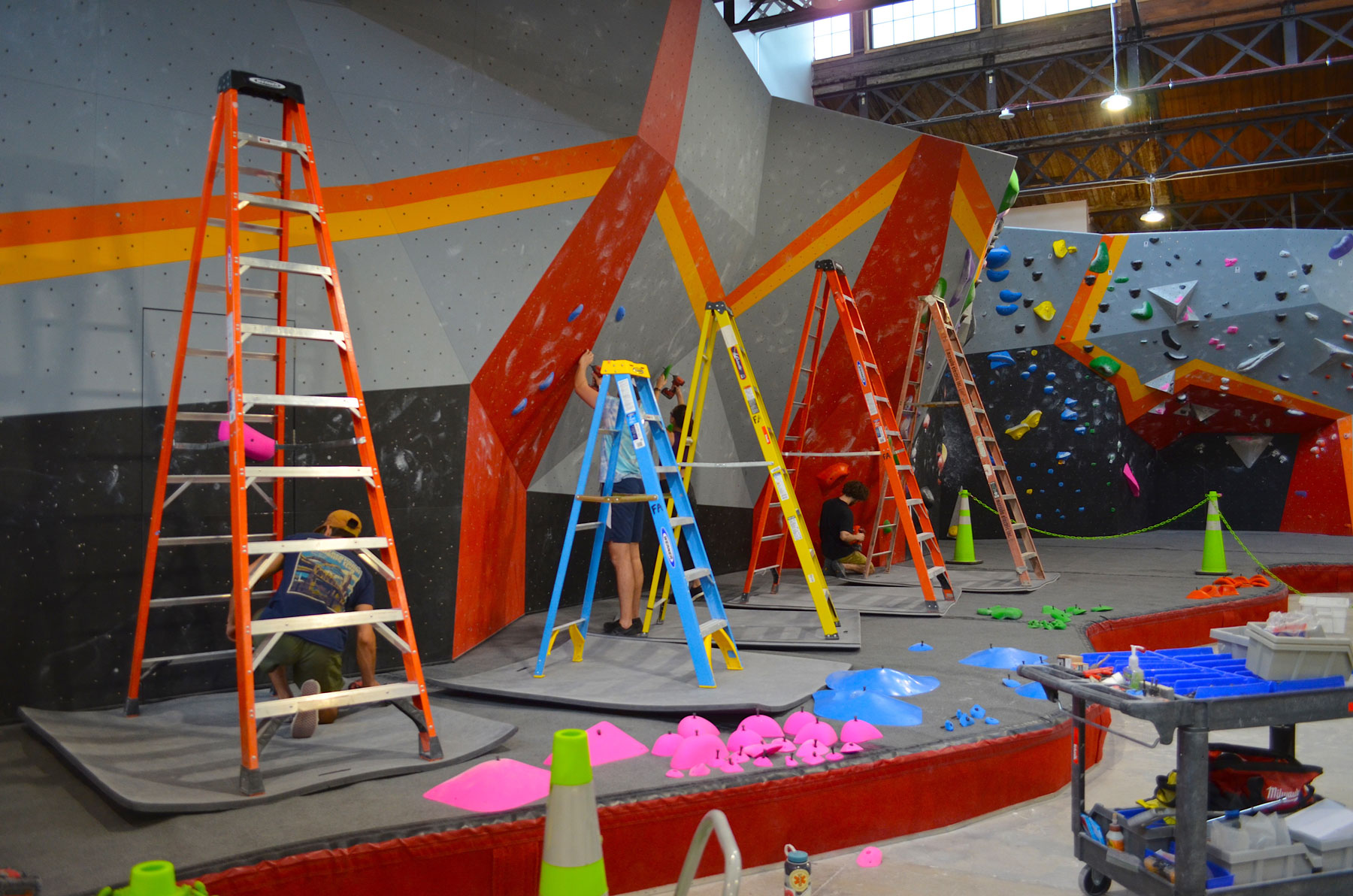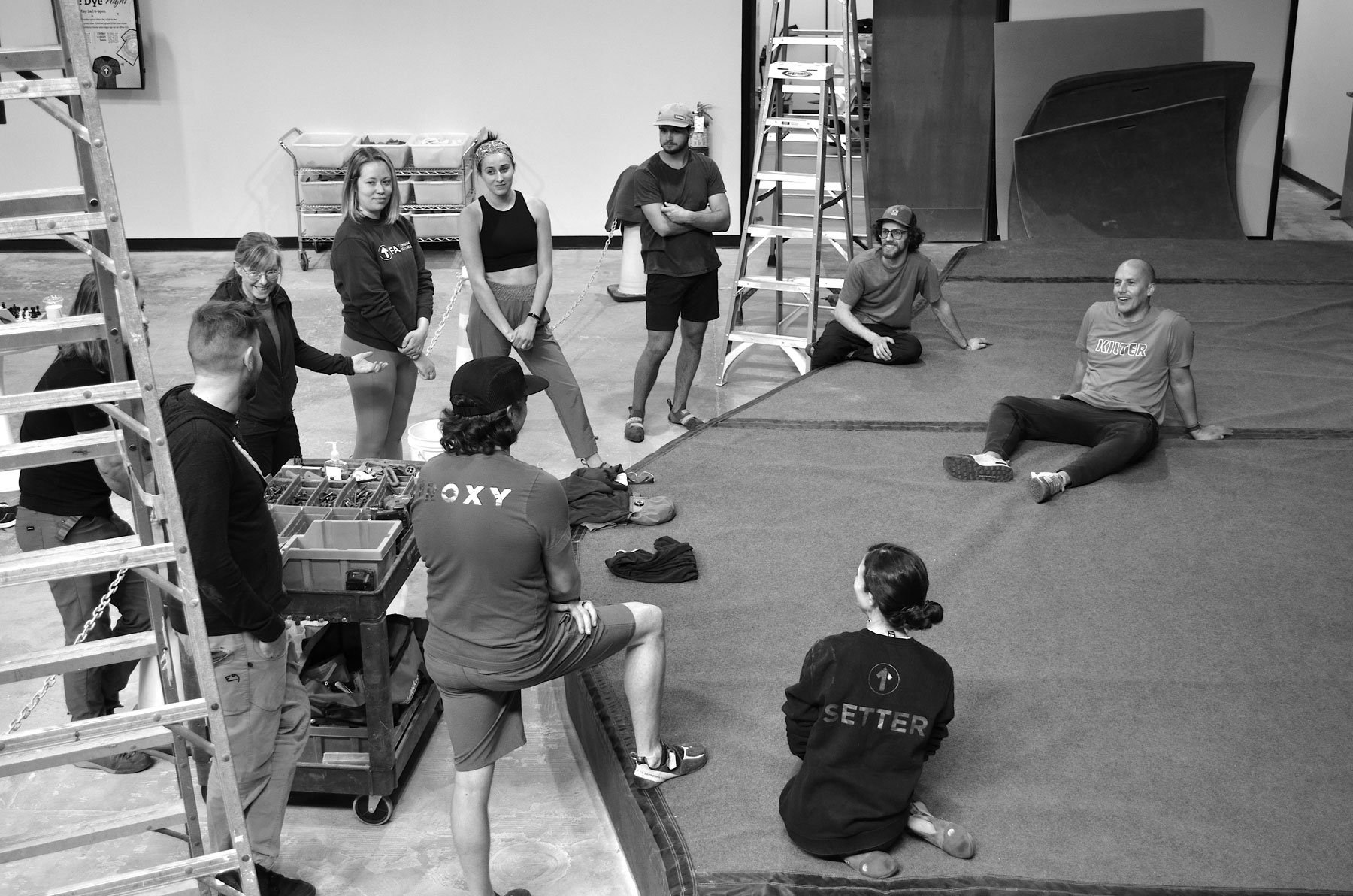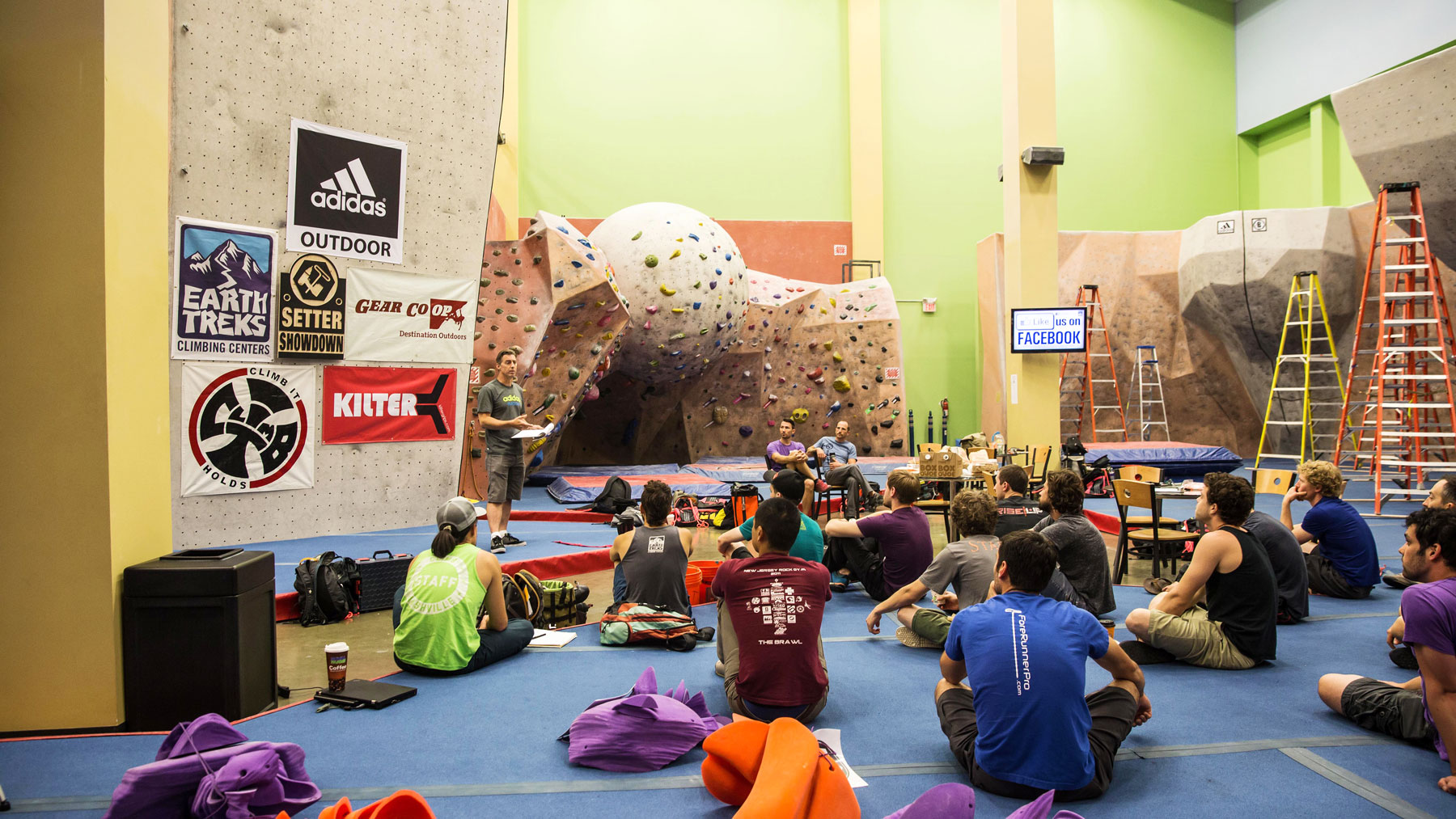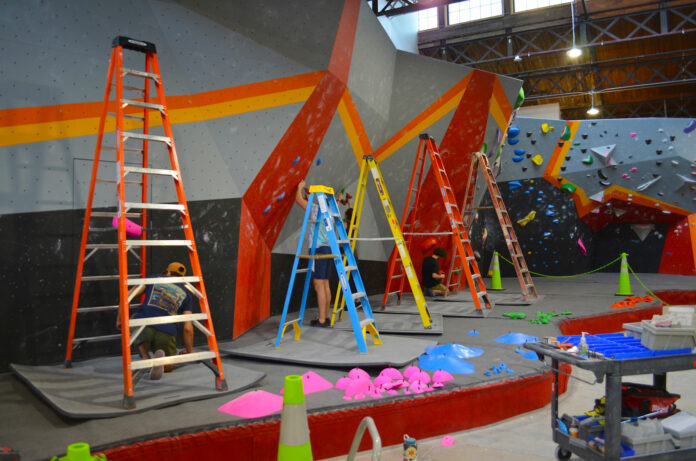
On July 3, the Climbing Wall Association released the CWA Routesetting Guide, a 45-page online document “aimed at helping climbing facilities build high-quality and effective routesetting programs.”
The release was a significant moment in the history of American routesetting, as the guide is the first of its kind: A commercial routesetting curriculum that is available for free to anyone. The guide is a landmark text in the proliferation of routesetting education and instruction, and in the establishment of standard practices for the climbing gym industry.
Specifically, the downloadable guide explores practically all aspects of the routesetting craft, from creating and evaluating routes to assessing risk and assigning grades. Bouldering, roped and auto belay routesetting are all included in the guide’s comprehensive coverage. CWA’s announcement of the guide explained, “The guide begins by discussing the routesetting profession and outlining the ideal characteristics of a routesetter. It then explores common roles and responsibilities within routesetting departments, offering insights into routesetting management, logistics, and material management.”
An All-Star Cast
In matters of creation, the Routesetting Guide was the result of extensive collaborative effort by a roster of routesetters and industry insiders from around the world—collectively known as CWA’s Routesetting Committee.
Committee membership changed and evolved over a three-year period (2020-2023), but the initial formulation was largely steered by Kenneth Cronin and Garnet Moore at CWA. Peter Zeidelhack of the German Alpine Club and Jackie Hueftle of Kilter were also instrumental in the founding of the committee. This early group amassed an esteemed roster of other routesetters from around the United States, including Ward Byrum, Paul Jung, Kasia Pietras, Yo Chi Lin, Sarah Filler, Claire Murphy, Justin Alarcon, Jeremy Ho, Chris LoCrasto and Ty Foose.

The committee soon went to work discussing concepts and drafting outlines—essentially creating the foundation for a working document that would eventually become the completed guide. (The committee at the time, largely through Zeidelhack’s connections to the European gym scene, also corresponded with the IFSC’s routesetting program, the leaders of which were conducting their own effort to start a commercial career track for setting. In addition, the CWA Routesetting Committee checked in with USA Climbing and further refined this guide’s purpose as a complementary commercial resource to the competition-focused USAC Setting Levels program.)
By 2022, several additional committee members had been added: Kyle Dontanville, Foxman McCarthy-James, Alexandra Fox and Justin Wright. Quinn Gordon and later Heather Reynolds of CWA also began contributing. A number of international routesetters were also invited to be involved at various points in the process, predominantly in a review capacity; this group included Geneviéve LaPlante, Dean Privett, Kaleb Thomas, Nate McMullan, Niklas Wiechmann, Dustin Curtis, Jack Masel and Tondé Katiyo.
“When it came to defining terms and topics, agreeing on language and structures, organizing, and deciding what to include and what to leave out, it ended up taking a lot of time and discussion—even among a group of experienced, knowledgeable people who have done this work professionally for years,” Jackie Hueftle told CBJ about the extensive, multi-year (and multi-person) process of creating the guide. “We met weekly, then bi-weekly, then weekly again for two years to create the first version of the guide, then it spent a year in initial review, and now it is released for public consumption and further review by the entire industry.”
Hueftle noted that the guide is intended to be utilized by gyms and routesetters as “a resource, not a rulebook,” and it will continue to be updated and improved over time. (CWA welcomes feedback on the guide at a “Public Comment” page here.)
The Storied Lineage
CWA’s Routesetting Guide is a historic step in the standardization of gym routesetting education in the United States, but it is part of a heritage that dates back nearly 30 years. For example, the formation of the American League of Forerunners in the early 1990s was the first instance of routesetters in the United States uniting with a common goal of sharing knowledge and expertise. Later that same decade, Tim Steele, a routesetter at RockQuest in Ohio, wrote down concepts that he and a few other routesetters (Ted Welser and Chris Danielson, among them) had been refining for years. Although the resultant document was never commercially available, Steele’s Route Setting Sermon provided some of the earliest codified explorations of gym routesetting’s methodology. Furthermore, two of the most prominent routesetters of the era, Mike Pont and Tony Yaniro, made a particular point to teach routesetting to the next generation.

By the early 2000s, climbing gyms around the United States were hiring full-time routesetters with greater frequency—and with that growth came more resources for routesetters in the form of magazine articles. Scott Rennak’s ABS Handbook, an annual offering for gyms that hosted American Bouldering Series competitions, became arguably the first widespread resource for routesetting instruction. And in 2004, Louie Anderson published The Art of Coursesetting (later updated and rereleased as Fundamentals of Routesetting), the first book devoted wholly to the craft of routesetting in the United States. “When I wrote The Art of Coursesetting, there was not much in the way of routesetter training or reference materials available,” Anderson explained. “While I did not consider myself the foremost authority on the topic, I did see a need for something that would provide a fundamental level of instruction for those interested in pursuing the activity. I’m very pleased to see that there is much more information available in today’s industry, with more being added regularly.”
In talking to CBJ, Hueftle acknowledged the history, and the way routesetting has become increasingly professionalized: “As the climbing industry grows, it is important to provide opportunities, including clearly defined career tracks and professionalization training and standards that will help the industry evolve and improve,” Hueftle said. “Efforts have been made in different areas over the years, but as the entire industry grows up it is time to formalize some of those efforts in cooperation around the world so routesetters can see and participate in a career track, and climbing gyms can understand how to create and maintain programs that benefit their gym and member base as well as their employees.”
Historic as it might be, CWA’s Routesetting Guide is not the end goal for the Routesetting Committee. The committee now aims to establish a clinic and certification system with the guide as a figurative anchor. Some initial clinics have already taken place, at this year’s CWA Summit in Pittsburgh and the Setter Summit in Salt Lake City, for instance. The next steps in an ongoing process are to hold more routesetting clinics, to finalize a certification system, and to offer online education.
“We are also using this time to work on ways for experienced setters to test into some certifications without having to jump through all the hoops of level 1 courses,” explained Hueftle. “The goal is to provide an inclusionary, helpful structure where existing skill sets and knowledge are respected and valued alongside new methodologies and new skills.”
Special thanks to Jackie Hueftle for providing valuable information about the process and the personnel of the Routesetting Guide’s creation.

John Burgman is the author of High Drama, a book that chronicles the history of American competition climbing. He is a Fulbright journalism grant recipient and a former magazine editor. He holds a master’s degree from New York University and bachelor’s degree from Miami University. In addition to writing, he coaches a youth bouldering team. Follow him on Twitter @John_Burgman and Instagram @jbclimbs. Read our interview Meet John Burgman, U.S. Comp Climbing’s Top Journalist.










